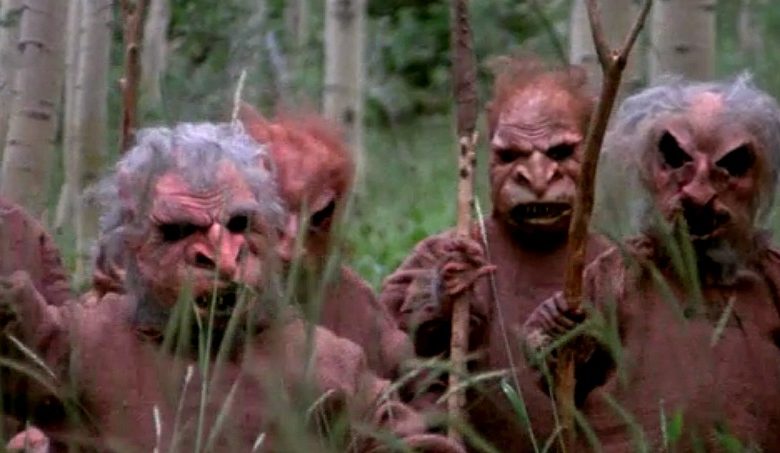
Enter “Troll 2,” a cinematic stink bomb that bullied its way into the “worst films of all time” category.
Where does a critic start with a movie like “Troll 2?” The acting is uniformly poor, the kind of mugging you’d expect from a seventh-grade production. The dialogue ranges from bad to, “how did they keep a straight face saying that?”
Yet the movie endures for its audaciously awful storytelling, a legacy that will only grow with time.
“Troll 2″ follows a boy named Joshua (Michael Paul Stephenson) who travels with his family to the cozy hamlet of Nilbog for vacation. Neither Joshua nor his family realize Nilbog is “goblin” spelled backward, so they’re unprepared for a town teeming with troll-like beasties.
No, the monsters aren’t referred to as trolls here, nor is the film a sequel in any real sense despite the title. It’s just two of many reasons why the film is so spectacularly bad.
The goblins are disguised as kindly towns folk, and the only defense Joshua’s family has is the ghost of his grandfather who gives them clues on how to survive.
Some “Troll 2” scenes need to be watched a second or third time to soak in their idiocy. Did a hormonal teen really get seduced by a woman brandishing a corn on the cob?
The goblin makeup doesn’t allow for the monsters’ mouths to move, or any other activity that could hint that the masks weren’t made from third-rate plastic.
It’s hard to believe the film wasn’t designed as camp from the outset. How else can you process a moment where the hero threatens the goblins with a bologna sandwich?
“The cholesterol! The toxins!” the evil goblin witch cries.
They’re putting us on, right? Nope. It’s all played straight, and that turns the unintentional laughs into all out guffaws.
Some choice highlights for your consideration:
- The teen who can’t decide between hanging out with his goofy pals or spending quality time with the adorable Holly (Connie Young).
- The half-tree, half boy sequence.
- The green ice cream that looks like regurgitated St. Patty’s Day beer.
- Did we mention the corn on the cob seduction?
So whip up your favorite snack, slather on some green icing and relish one of the best worst movies … ever.
DID YOU KNOW: “Troll 2” co-star Michael Paul Stevenson directed “Best Worst Movie,” a documentary capturing the cult surrounding the film. It took years for him to appreciate his ties to the movie. Making the documentary helped that healing process. “It’s a sincere kind of failure, nonetheless but it’s genuine. There is no irony,” he told Crave Online.

CT nails it again. This is the most successfully-unsuccessful movie of all time. It stinks on ice. But its worth a watch. The documentary on this film is a must see…